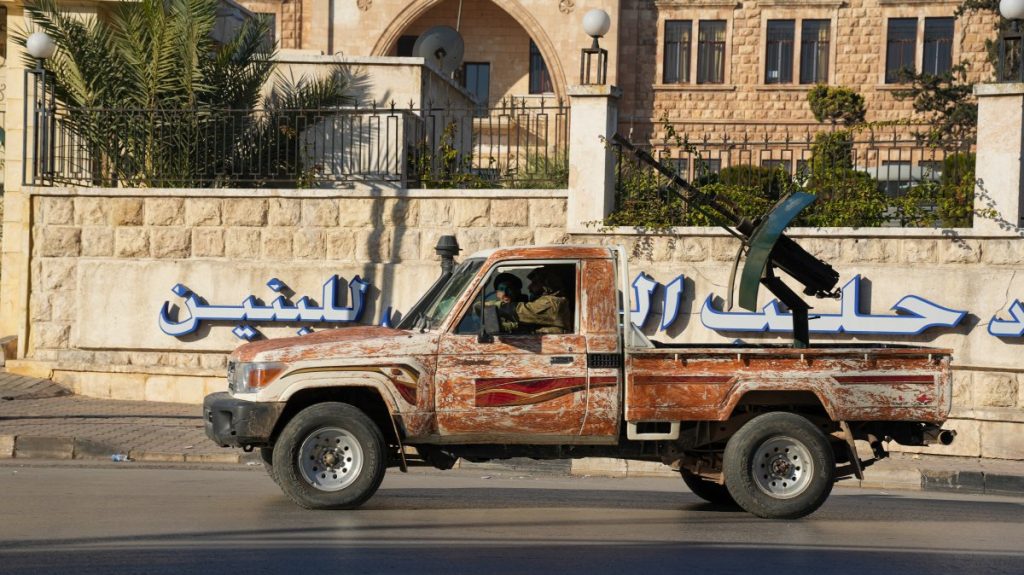The developments in Syria were quick to leave the attacks on Gaza in the background as the international community’s focus shifted away from the ongoing atrocities in the strip to a recurring conflict of 13 years.
The Hayat Tahrir al-Sham (HTS), a group previously part of the Nusra Front, an al-Qaida-linked terrorist group that was renamed later, as well as several opposition groups, including the Türkiye-backed Syrian National Army (SNA), launched a military operation against the forces of the Bashar Assad regime on Nov. 27. The groups took the main northern city of Aleppo last week and have since pushed south from their enclave in northwest Syria, reaching a strategic hill just north of Hama and advancing toward the city’s east and west flanks on Wednesday.
The status quo had been the same for the past few years as neither actor in the war-torn country proved superior to the others. However, the conflict in the Middle East and the weakening of Iran and its proxies paved the way for the latest change on the Syrian map.
A vacuum emerged in the country after Iran, which along with Russia is the main backer of Assad, engaged in conflict with Israel and suffered significant losses among its proxies, including Hezbollah, which had a noteworthy presence in Syria. With Israeli pressure mounting on Iran-backed groups across the region, several Iranian military officials had to leave Syria, according to a source familiar with the issue. The source added that Iran, despite its limited ability to support Assad, is currently sending around 2,000 troops.
Shift in front lines
Questions have arisen as to what the role of the main actors in Syria – Türkiye, Russia, Iran and the U.S. – is regarding this operation. Let us look at some possibilities and leave the interpretation to the readers.
The weakening of Assad is directly linked with the interests of Iran, whose Shiite network is operating in Syria. Moreover, Syria is the main route connecting Iran to other areas of influence, such as Lebanon, which is a critical field nowadays.
Just a week before the operation, Foreign Minister Hakan Fidan warned that the lack of tangible steps on terrorism and refugees is creating a more substantial threat within Syria.
“Therefore, we are pursuing solutions. If diplomatic and constructive approaches fail, we will inevitably evaluate other measures when the time comes,” Fidan.
Moreover, following the operation, Foreign Ministry spokesperson Öncü Keçeli said, “Ankara warned on various international platforms that the recent attacks on Idlib (by the Assad regime and Russia) have reached a level that will harm the spirit and functioning of the Astana agreements and cause serious civilian casualties, and we have put on record that these attacks must be stopped.” Türkiye, in its statements, underlines that the status quo established by the Astana deal was broken by these actors, which led to the opposition and HTS’s operation.
Türkiye had long feared Idlib imploding due to continued attacks, which would once again send waves of migrants toward the country.
Another inference made by Ankara regarding the recent Syria operation is that it increased pressure on Assad, who lacks control of his country’s territory with the opposition holding ground in the northwest and the PKK/YPG in the northeast, and that this could lead Assad to reconsider his stance toward Ankara, the main backer of the opposition. Türkiye has offered a channel of dialogue to normalize with the regime and enable the stalled political process in the country to proceed. However, Assad’s maximized conditions for normalization and uncompromising stance have hindered an Ankara-Damascus alignment. Already, the chairperson of the Nationalist Movement Party (MHP), a close ally of the Turkish government, Devlet Bahçeli, has called for revitalizing diplomatic relations between Ankara and Damascus amid the latest developments.
Most people have been puzzled about Russia’s stance toward the HTS-led operation. Like Iran, Russia has been preoccupied with other developments, such as Ukraine. Again, a prominent backer of Assad, Russia has only engaged in limited airstrikes to aid the regime.
If there is background coordination between Russia and Türkiye, the aim might be to lessen Iranian influence and force Assad to negotiate. In the possibility of a lack of consensus between Ankara and Moscow, Russia may be staying silent to prove to Assad that it is the primary patron rather than Iran. Lastly, due to the main battleground for Russia being Ukraine right now, Syria might be ranked lower on its list of priorities.
The U.S., on the other hand, is preoccupied mainly with Israel’s security and curbing the threat from Iran under the new Donald Trump administration. Looking at these two realities, the Syrian opposition operation aligns with Washington’s interests, which has only given a muted statement on the latest developments.
All in all, the HTS operation changed the balance in Syria in favor of the opposition, which now, by holding Aleppo – Syria’s second biggest city and economic hub – bears a vital bargaining chip. Following years of frozen front lines, the military campaign has opened a new reality and chapter on the ground.


